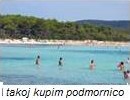14 prispevkov
Stran 1 od 1
- Olimpicus
- Nov uporabnik
- Prispevkov: 90
- Pridružen: So jun 05, 2010 3:24 pm
Zamrznjeno vetrobransko steklo
Zanima če kdo kaj ve ali lahko pri novem vozilu uveljavljam garancijo za vetrobransko steklo, ki mi zmrzuje z notranje strani??
-

tiguan - aka Sonček
- Prispevkov: 1306
- Pridružen: So mar 13, 2010 7:00 pm
Re: Zamrznjeno vetrobransko steklo
To se ne sme dogajat, vrjetno imaš vlago v avtu, poglej pod predpražnik, če imaš kaj mokro.
Član od leta 2004
-

lisko - Moderator / upravnik foruma
- Prispevkov: 8469
- Pridružen: So mar 15, 2003 4:13 am
Re: Zamrznjeno vetrobransko steklo
Očisti si čevlje predenj greš v avto...skrbi da bo predpražnik suh in da v avto ne bo vlage pa ne bo teh problemov.

(Sine! Kaj naj nardim da pridem prek pločnika?......... Jeep-a si kup pa ne jamri :P )
-

Pero - Poznavalec foruma
- Prispevkov: 1873
- Pridružen: Sr feb 06, 2002 12:07 pm
Re: Zamrznjeno vetrobransko steklo
Pojjdi na servis da ti nastavijo ventilacijo.
-

nevermind - Poznavalec foruma
- Prispevkov: 2836
- Pridružen: To jun 16, 2009 2:49 pm
Re: Zamrznjeno vetrobransko steklo
lisko je napisal/-a:Očisti si čevlje predenj greš v avto...skrbi da bo predpražnik suh in da v avto ne bo vlage pa ne bo teh problemov.
x2
-

BBoss - Poznavalec foruma
- Prispevkov: 1933
- Pridružen: Pe apr 29, 2005 12:51 pm
Re: Zamrznjeno vetrobransko steklo
Tudi pozimi uporabi klimo zaradi razvlaževanja.
-

lancia hf - Uporabnik
- Prispevkov: 4669
- Pridružen: Ne jun 29, 2008 11:17 am
Re: Zamrznjeno vetrobransko steklo
BBoss je napisal/-a:Tudi pozimi uporabi klimo zaradi razvlaževanja.
Samo, klima se uporablja, če imaš zarošeno vetrobransko steklo, ne pa zmrznjeno, ker nevem koliko klim v avtomobilih dela pod +5 stopinj, in dokler bo v avtomobil hodil tak kot je že napisal lisko, bo imel zamrzneno steklo.





-

BBoss - Poznavalec foruma
- Prispevkov: 1933
- Pridružen: Pe apr 29, 2005 12:51 pm
Re: Zamrznjeno vetrobransko steklo
lancia hf je napisal/-a:BBoss je napisal/-a:Tudi pozimi uporabi klimo zaradi razvlaževanja.
Samo, klima se uporablja, če imaš zarošeno vetrobransko steklo, ne pa zmrznjeno, ker nevem koliko klim v avtomobilih dela pod +5 stopinj, in dokler bo v avtomobil hodil tak kot je že napisal lisko, bo imel zamrzneno steklo.
Govorim za razvlaževanje notranjosti že prej in ne šele takrat, ko je že vse fajhtno in posledično zaledenelo. Takrat zaleže sam še segretje motorja in usmeritev pihanja v šipo.
Pri mojem avtomobilu je namreč velika razlika, če klima ni prižgana saj se mi šipe začnejo rositi tudi pri zelo nizkih temperaturah, ko pa je klima prižgana pa je vse OK saj kot mi je znano razvlaževanje deluje tudi pri temperaturah pod nulo.
- protonika
- Stalni uporabnik
- Prispevkov: 582
- Pridružen: Sr nov 03, 2004 4:19 pm
Re: Zamrznjeno vetrobransko steklo
lancia hf je napisal/-a:BBoss je napisal/-a:Tudi pozimi uporabi klimo zaradi razvlaževanja.
Samo, klima se uporablja, če imaš zarošeno vetrobransko steklo, ne pa zmrznjeno, ker nevem koliko klim v avtomobilih dela pod +5 stopinj, in dokler bo v avtomobil hodil tak kot je že napisal lisko, bo imel zamrzneno steklo.
A če klima vseeno dela, je kaj narobe? Ker ob nič stopinjah in dežju je pri meni v avtu takoj megla.
Protonika ima bullbar.
- peroRS
- Mojster foruma
- Prispevkov: 5601
- Pridružen: To apr 21, 2009 3:28 pm
Re: Zamrznjeno vetrobransko steklo
protonika je napisal/-a:A če klima vseeno dela, je kaj narobe? Ker ob nič stopinjah in dežju je pri meni v avtu takoj megla.
Nič ne bo narobe s klimo. Vklopljeno imej AUTO ali AC (karkoli imaš), pa se ne bo rosilo.
p.s: ne razumem pa ljudi, ki mislijo, da bo klima ob zunanji temperaturi npr. -5 pihala mrzlo. Tudi če nastaviš notranjo temperaturo na najnižnjo možno (+18) bo pihala toplo. Treba je mal logiko uporabit.
Glede zamrznjene šipe pa so že drugi povedali. Očistit je treba obutev (malo udariš s čevlji po tleh, da sneg pade dol), pa vsake toliko tepih streseš ven, da se ne nabira voda notr. Ker drugače je vlažno v avtu, pa potem zmrzne, če avto nekaj časa miruje zunaj.
-

Energetik81 - Mojster foruma
- Prispevkov: 3066
- Pridružen: To mar 13, 2007 7:13 pm
- Kraj: Ljubljana
Re: Zamrznjeno vetrobransko steklo
Ampak prvo vprašanje je pa svetovno - ali uveljavljati garancijo, ker šipe zmrzujejo... 
Človek, zima je in šipe imajo -10°C. Če pihneš v njih, je logično da bo vse takoj zmrznilo. Pomaga le gretje+klima, da narediš izredno suh zrak v kabini (kar pa spet ni dobro za dihala - meni se že samo pri gretju posuši nos in usta). Zadnjič zjutraj sem peljal v Dovje, pa so šipe začele zmrzovati na notranji strani kljub že ogreti kabini...je bilo pač peklensko mrzlo.
Kdaj bojo začeli pa delati termopan šipe tudi v avtih, pa ne vem. Čeprav bi to rešilo praktično vse težave z rosenjem in zmrzovanjem v notranjosti.
Človek, zima je in šipe imajo -10°C. Če pihneš v njih, je logično da bo vse takoj zmrznilo. Pomaga le gretje+klima, da narediš izredno suh zrak v kabini (kar pa spet ni dobro za dihala - meni se že samo pri gretju posuši nos in usta). Zadnjič zjutraj sem peljal v Dovje, pa so šipe začele zmrzovati na notranji strani kljub že ogreti kabini...je bilo pač peklensko mrzlo.
Kdaj bojo začeli pa delati termopan šipe tudi v avtih, pa ne vem. Čeprav bi to rešilo praktično vse težave z rosenjem in zmrzovanjem v notranjosti.
-

esem - Moderator foruma
- Prispevkov: 9986
- Pridružen: Ne mar 27, 2005 6:35 am
- Kraj: Ljubljana pri Kozarjah
Re: Zamrznjeno vetrobransko steklo
Olimpicus je napisal/-a:Zanima če kdo kaj ve ali lahko pri novem vozilu uveljavljam garancijo za vetrobransko steklo, ki mi zmrzuje z notranje strani??
Pri novem ne, pri nekaterih rabljenih pa garancijo lahko uveljavljaš tudi, če zmrzuje z zunanje strani. Žal so redki, garancija pa je geografsko omejena.
-

joztom - Mojster foruma
- Prispevkov: 3155
- Pridružen: To jul 25, 2006 3:04 pm
- Kraj: Ljubljana
Re: Zamrznjeno vetrobransko steklo
Jaz mislim, da ti morajo to preveč hladno šipo zamenjati na servisu. Ko človek kupi avto, je najmanj to potrebno, da prebereš navodilo za uporabo. Če se ti niti toliko ne ljubi, ti nobeden živ ne more pomagati. Klima pozimi je neumnost prve klase, razen če ni to pogojeno kot v hroščih, kjer na najmanj 15% laufa. Vsi imajo pa normalno pritisnjeno tipko ECO, ker že itak ob segrevanju za 20°C zrak zgubi relativno vlago. Če pa občujete v avtih za Savo, da so zasopli, potem pa odpreš okno za kakšno minuto, pa je. Če pa kadiš v avtu, ni rešitve za rosenje.
-

Tattoo- - Uporabnik
- Prispevkov: 1318
- Pridružen: Če dec 16, 2004 10:33 pm
- Kraj: Circuit de la Sarthe
Re: Zamrznjeno vetrobransko steklo
OFF...Volkswagen že razmišlja tudi v tej smeri!Energetik81 je napisal/-a:Kdaj bojo začeli pa delati termopan šipe tudi v avtih, pa ne vem. Čeprav bi to rešilo praktično vse težave z rosenjem in zmrzovanjem v notranjosti.

Volkswagen Preparing Ice-Free Windshields
The Volkswagen Group today announced that it has joined forces with the Fraunhofer Institute to develop the first anti-fogging and anti-icing car windscreen. The automaker wants to spare drivers from the unpleasant task of ice scraping by introducing this concept of ice-free windows.
Unlike heated windows, the new development is based on a psychical principle that prevents the ice layer to form in the first place (at temperatures as low as minus 18 degrees C). The new windows use a wafer-thin transparent coating of indium tin oxide to achieve this.
“The conductive "Low-E coating" protects the glass from cooling, so that water on the outer surface does not condense or freeze. No ice film is formed, because radiative heat loss to the cold sky is minimised, and this prevents or delays cooling of the glass surface to below the dew point. Of course, weather conditions such as cloudiness, relative humidity and wind also play a significant role here and affect the windows’ condensation behaviour,” explained the press release. Of course, the “Low-E coating” can’t prevent ice formation or condensation entirely, but it can significantly reduce the intensity of the processes. The project is still under development, with one current issue being that the new coating affects radio traffic in a car, limiting radio and mobile phone use.
“It will take some time before the ice-free car windscreen is market-ready, but we are working intensively toward this goal. The bottom line is that for the Volkswagen Group, the ice-free window represents a successful innovation that is unique worldwide," said Thomas Drescher of Volkswagen Development.
There are only three sports: bull fighting, car racing and mountain climbing. The rest are mere games! - Ernest Hemingway
14 prispevkov
Stran 1 od 1
Kdo je prisoten
Po forumu brska: 0 registriranih uporabnikov in 2 gostov

